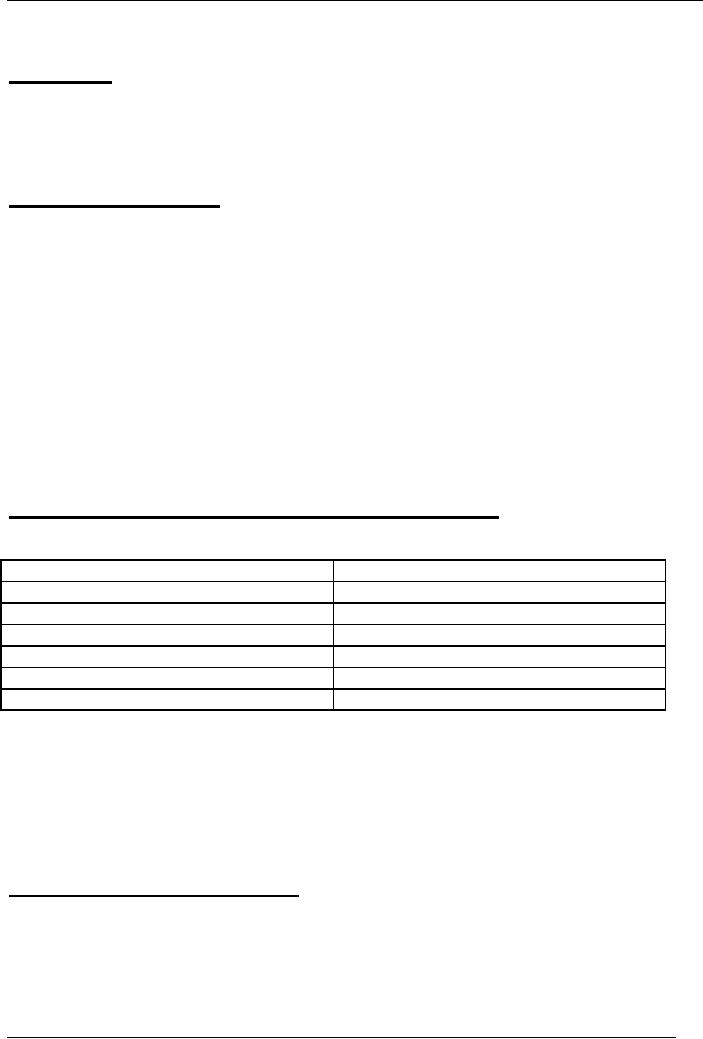 |

Advertising
and Promotion (MKT621)
VU
Lesson
39
COMPONENTS
OF ADVERTISING
OVERVIEW
In
this lecture the components
of advertisement and its impact on
mind with reference to
the
effectiveness
pertaining to brand focus and ad
focus will be discussed, beside
this measures
regarding
using brand focused
effectiveness will be highlighted. The
students will be apprised
of
making good ad campaigns for food
products tourist destinations and
medicines.
BUY
- OLOGY OF MIND:
The
suffix, "ology" is used to mean
either "the study of" or
"the science of". Here we
are
discussing
the science of consumption
(or buying). In particular we
address the role of
the
mind,
how it influences buying and
brand choice and how to go
about measuring it. In
this
regard
when we are exposed to an ad
there are four components to
remember
1.
AD EXECUTION: It is the creative
vehicle that we hope will make the
audience sit up
and
take notice and will made a breakthrough
for capturing the attention
by its capacity to
deliver
the message.
2.
THE PRODUCT: The ad should
clearly detail the product
benefits and highlight
its
uniqueness.
3.
THE BRAND: The most
common problem in advertising is
registering the correct
brand
in
memory as don't have to see
the brand but you get
the brand all the
same.
4.
THE MESSAGE: The message is
very vital as it is the one
which changes the mind
set
through
its effectiveness and convincing
exposition.
OTHER
MEASURES OF ADVERTISING
EFFECTIVENESS:
The
main measures as given in
the chart below focus on
the add itself ad
recognition, ad
recall,
message take out and liking and
believability of add.
Brand
focused
Ad
focused
Purchasing
behavior
Ad
recognition
Attitudes-buying
intentions
Ad
recall
Brand
awareness
Correct
branding
Brand
Image
Message
takeout
Ad
liking
Ad
believability
USING
BRAND FOCUSED
MEASURES:
In
order to elaborate further on brand
focus measures following 4
measures can be consider:
1.
Are more buyers buying
it? Measure Brand
Behavior
2.
Are they ready to buy
it? Measure Brand
attitudes or intentions
3.
What do they think about
it? Measure spontaneous brand
awareness
4.
Do they indulge in buying?
Measure brand image association
MAKING
GOOD AD CAMPAIGNS:
Good
ad campaigns are those which help in
achieving the objectives in
the most effective
way.
The
adverting of food products
have many problems in order
to overcome them
following
strategy
will help in making a good campaign
for food products in print
and electronic media.
·
Make
ads around appetite appeal.
·
The
Larger food illustration,
more appetite appeal.
·
Devote
Food Ads to food
more.
118

Advertising
and Promotion (MKT621)
VU
·
Use
Color. Food looks more
appetizing in color than
black & white.
·
Use
photographs-they have more
appetite\appeal than artwork.
·
One
photograph is better than
two or more. If you have to
use more photos, make one
of
them
dominant.
·
Give
recipe whenever you can.
Housewife is always on the
lookout for new ways
to
please
her family.
·
Illustrate
your recipe in your main
photo.
·
Get
news into your advertisement
whenever you can.. News
about new product
etc.
·
Make
your headline specific,
rather than general.
·
Include
your brand name in your
headline.
·
Locate
your headline and copy below
your illustration.
·
Be
serious and don't use humor or
fantasy.
TELEVISION
·
Show
how to prepare your
product.
·
Show
your product early in the
commercial.
·
Use
sound effects relevant to
product.
RADIO
·
Describe
how to prepare your
product.
·
Mention
your product early in
commercial.
·
Use
sound effects relevant to
product.
TOURIST
DESTINATIONS:
Travel
and tourism has become a
part and parcel of the life
of modern day people in order
to
attract
them to countries. Tourist operators
use advertising to promote and
project their
destinations,
following conclusions can be useful to
make a good tourism advertising.
·
Destination
advertising is bound to affect.
The image of the country
concerned, it is
politically
important to project it
favorably.
·
Tourists
want to see unique things.
So show those.
·
Project
things which people will never
forget.
·
Ads
should appear in media which people
read to travel long
distances.
·
The
biggest barrier to travel is its
cost. Ads should rationalize
costs by selling its
cultural
&
status overtones.
·
People
dream about faraway places. Your ads
should convert their dreams
into action.
·
Use
combination of mouth watering
photographs & specific
information.
·
Patterns of
travel are peculiarly
subject to fashion. Your ads
should put your country
on
the
map where every one is
going.
MEDICINES
ADVERTISING DRUGS IS AN
ART:
Advertising
medicines is a special art following
are the principles which
should be used by
those
who want to practice this
art.
·
Should
highlight the difference
between your brand and of
the competitors.
·
A good
medicine advertisement should
contain news.
·
A good
medicine ad should have the
feeling of seriousness.
·
A good
medicine ad should convey a
feeling of authority.
·
The ad
should explain the disease
as well.
119
Table of Contents:
- INTRODUCTION TO ADVERTISING:Its growing importance, Explanation of Personal and non-personal selling
- INTRODUCTION TO ADVERTISING:ADVANTAGES, Communication, Information, Various Media
- INTRODUCTION TO ADVERTISING:FUNCTIONS OF ADVERTISING, IMPACT OF ADVERTISING
- ADVERTISING AND SOCIETY:PRACTICAL BENEFITS, ETHICS IN ADVERTISING, Marketplace & Market space
- MARKETING TOOLS:COMPONENTS OF MARKETING MIX, PRODUCT LIFE CYCLE (PLC) CURVE
- MARKETING TOOLS:SWOT Analysis, Contents & Structure, ROLE & FUNCTION OF ADVERTISING
- ROLE AND FUNCTIONS OF ADVERTISING:Structure of an Advertising Agency, How to Select an Advertising Agency
- ADVERTISING PLANNING:ADVERTISING OBJECTIVES, Types of Advertising, Positioning Strategies
- POSITIONING:BRANDING, 7 Steps of Creative Process, UNIVERSAL ADVERTISING STANDARDS
- ADVERTISING MESSAGE:Message Content, BASIC TERMS & CONCEPTS
- ADVERTISING BUDGET:4 Methods to determine, ADVERTISING RESEARCH, ADVERTISING RESEARCH
- ADVERTISING REACH:BROAD COMMUNICATION OBJECTIVES, ADVERTISING COPY METHODS, MEDIA RESEARCH
- PRE – PLACEMENT EVALUATION:ACCOUNT PLANNING, MARKET, COMPETITION
- WORKING OF ADVERTISING:12 Steps to develop effective campaign, SOURCE or THE ADVERTISER
- ADVERTISING RESPONSE HIERARCHY MODELS:AIDA MODEL, PROCESS REQUIRED TO GET BIG IDEA
- PROBLEM SOLVING STRATEGIES:Procedure to Handle Problems, In brief, Eight principles apply to consumer behavior
- CONSUMER BEHAVIOUR:ADVERTISING APEALS, MEDIA MIX DECISIONS, Target Rating Point (TRP)
- CREATIVITY IN ADVERTISING:Three aspects are most accepted, Four Rules of Creativity
- COPY WRITER:CHARACTERISTICS OF COPYWRITER, IMPORTANCE OF LANGUAGE
- WHY ADVERTISING:Advertising & Market Education, ADVERTISEMENT CAMPAIGNS
- METHODS TO APPRECIATE A PROBLEM:SPONSORSHIP—an important tool, Special Characteristics
- IMPORTANT TOOL OF ADVERTISING:TELEVISION ADVERTISING, TRANSIT ADVERTISING
- ONLINE ADVERTISING:Banners, Logos, Email Ads, Keywords on Search Engines, New Developments
- ONLINE ADVERTISING:Structural Challenges, Adobe Photoshop, JAVA, HTML, DHTML, ASP & JSP
- SALES PROMOTION:Consumer Oriented Promotion, HOW TO USE TRADE PROMOTION, Dealing with the Trade
- PUBLICITY:PERSONAL SELLING, ROLE OF SALES PERSON, FUTURE OF GLOBAL ADVERTISING
- MARKETING ENVIRONMENT:Competitors, The Target Buyer, Segmenting your Market, FUTURE OF MARKET GROWTH
- MARKETING PLAN:Situational Analysis, Macro – Environment Situation, Marketing Objectives, Financial Objectives
- MARKETING PLAN:PROMOTING BUSINESS IN LOW COST, SUPPLY CHAIN, BUYER IDENTIFICATION
- HOW TO BE GOOD CLIENTS:CHANNEL BUYERS, HOW TO BE GOOD CLIENTS 14 RULES
- CLIENT – AGENCY RELATIONSHIP:HOW TO KEEP CLIENTS (10 Ways), Three Points for Consideration
- CLIENT – AGENCY RELATIONSHIP:ADVERTISING WITHOUT AN AGENCY, LOGO AND CORPORATE IDENTITY
- NEWSPAPER ADVERTISING:AD PRODUCTION,TYPES OF NEWSPAPER ADS, CIRCULATION
- OTHER ADVERTISING MEDIUM:HOW TO USE MAGAZINES, HOW TO USE RADIO, Daypart buying options
- UTILITY OF VARIOUS MEDIA:TAPE OR FILM, UTILITY OF TV, DIRECT MAIL PACKAGE
- OTHER ADVERTISING MEDIA:POINT OF PURCHASE (POP), TRANSIT ADVERTISING, LIMITS OF ADVERTISING
- CONTINUOUS TRACKING:PLANNING CAMPAIGN, HOW TO UNDERSTAND ADS, ASK BASIC QUESTIONS
- SEASONAL ADVERTISING:MAXIMIZING IMPACT, THE WEB ADVERTISING, MEASURING ADVERTISING
- COMPONENTS OF ADVERTISING:BUY - OLOGY OF MIND, BUY - OLOGY OF MIND
- CRITICISM ON ADVERTISING:SHOULD ADVERTISING BE ABOLISHED,
- EFFECT OF ADVERTISING:HOW TO PROMPT AWARENESS, CREATING DESIGN THAT SELLS
- CREATING EFFECTIVE DESIGN:LANGUAGE OF TYPOGRAPHY, HEADLINES THAT COMMUNICATE
- WORKSHEETS:DEMOGRAPHICS OF YOUR TARGET, YOUR COMPETITOR
- GLOSSARY OF ADVERTISING:ACCOUNT EXECUTIVE, PROOF, VOICE OVER
- CONCEPT OF AN AD:HOW TO DEVELOP A CONCEPT OF AN AD